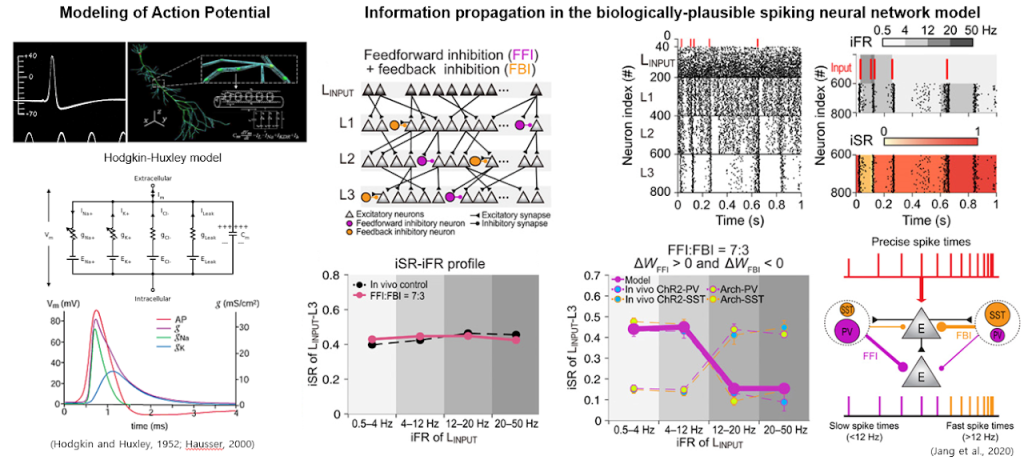Neuromorphic Spiking Neural Network

Recent progress in artificial intelligence leads human-level performance in various cognitive tasks such as recognition, control, and generation, accomplished through deep hierarchical artificial neural networks that function like the brain.
However, current artificial neural network has several problems: inflexibility, high-energy consumption, non-modular structure and limited online learning capabilities.
From the perspective of the brain, we believe that conventional artificial intelligent tasks could be performed more efficiently by mimicking the structure and processing of the brain, which is the most efficient biological computing system. To achieve this, we have developed a spiking neural network that processes inputs in a manner similar to the neurons in the brain, incorporating features such as neural network structure and learning algorithms.
Furthermore, by implementing the spiking neural network model on neuromorphic hardware chips/systems, we aim to advance the post-silicon semiconductor system.
Computational Neuroscience

To adopt the brain’s information processing strategies, we must first understand how the brain processes information. However, the neural circuits of the brain are incredibly complex and dynamic, making it challenging to capture all the details using current experimental tools.
In order to complement this, we use experimentally-derived data to construct physiologically and anatomically realistic computational models of synapses, neurons, and neural circuits.
With the help of these models, we can extrapolate our experimental data and make new predictions about neural computational rules (neural coding) that can be tested experimentally.
This knowledge of neural coding could be used to implement more biologically-plausible and efficient spiking neural network models for the next-generation neuromorphic computing architecture.
Electrophysiology

One major limitation of computational neuroscientific approach is the lack of the perfect model of the brain due to the massive diversity of neuron and synaptic connectivity. Therefore, we are interested in elucidating how the brain can process information by recording neuronal activities of various types of neurons using multi-electrode silicon probes.
These spiking activities contain information encoded in varous neural codes. For example, temporal code conveys the information through precise spike times, and rate code encodes information in the how many spikes within a given time. Additionally, functional analysis of spiking activites provide insights into the neural network structures.
Thus, the understanding these neural coding strategy will provide the new insights to develop the brain-inspired neuromorphic computing architecture that leverage the principles of the brain.
Current Research Projects
Currently, we have the following projects underway at the moment:
- Development of optimization algorithm for heterogenous neuronal architecture
- Development of audio-visual multimodal processing spiking neural network
- Investigation of the neural code and functional neural network between auditory and visual cortex in audio-visual information processing
- Investigation of the role of heterogeneous learning algorithms
